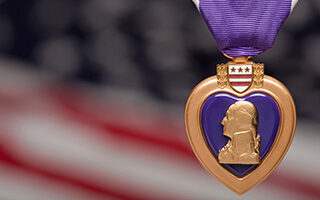
August 7 is National Purple Heart Day. It pays homage to the brave American men and women wounded or killed in battle or captured and injured by enemy forces.
The Purple Heart is one of our best-recognized military symbols, and it’s America’s oldest military decoration. Let’s have a quick look at its beginnings.
First known as the Badge for Military Merit, the Purple Heart was created by General George Washington on August 7, 1782, as a way to recognize the bravery of his Revolutionary War fighters.
The award was only for enlisted men and consisted of a small, purple heart-shaped piece of silk, edged in silver binding. Recipients had their names recorded in the “Book of Merit,” and they were given some of the same privileges as commissioned officers.
Washington expected that the award would be permanent, but it was forgotten about as the Revolution drew to an end the following year.
In 1932—exactly 150 years after Washington created the medal—Gen. Douglas MacArthur led a successful campaign to have the award resurrected. Renamed the Purple Heart, it featured a new design bearing Washington’s face (still used today) and was awarded for new reasons and to members of all the military branches—not just the U.S. Army.
Washington’s version recognized soldiers for bravery during battle. The new version—first awarded in World War II—was given to military members injured or killed in the line of duty. Meritorious service was from then on recognized with the Legion of Merit award.
In 1996, the list of possible recipients was amended to include prisoners of war.
Since World War II, it’s estimated that 1.8 million Americans have received the Purple Heart. And in Texas, about 47,000 recipients are still with us. Veteran Energy salutes you all. Thank you for your sacrifice.


